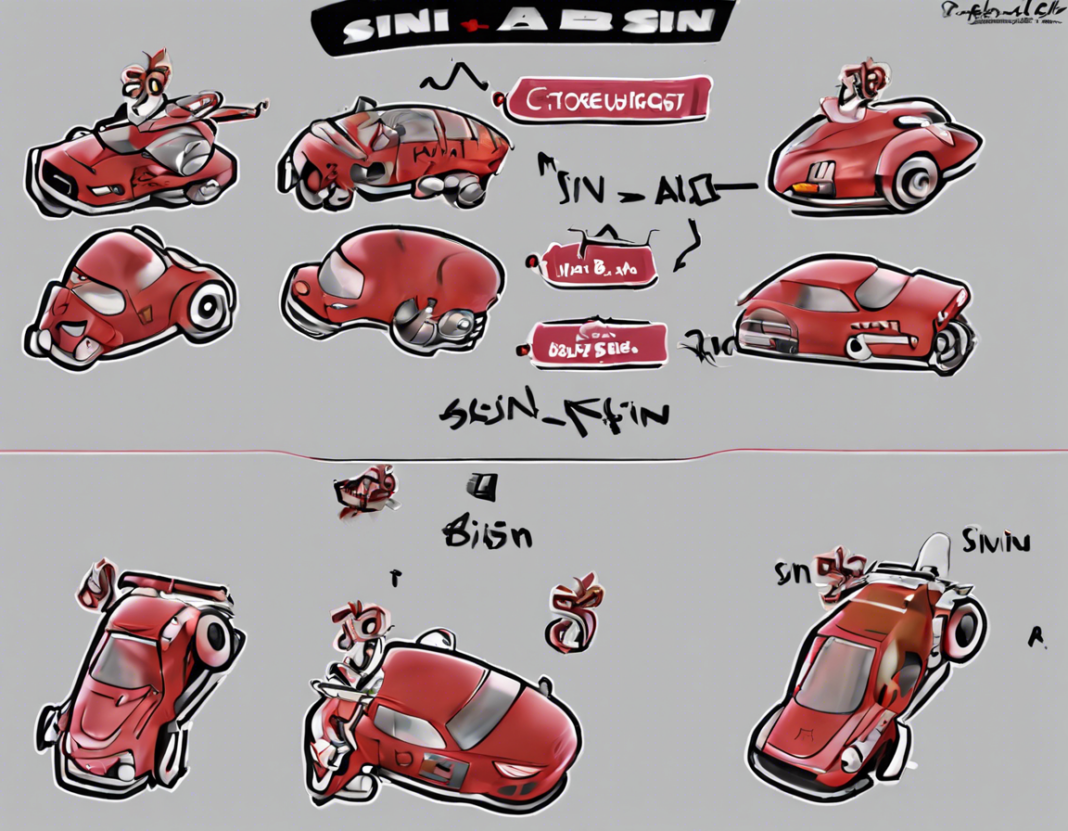Trigonometric identities play a crucial role in the study of mathematics, specifically in the branch of trigonometry. These identities are essential tools that help simplify trigonometric expressions and equations. One of the fundamental trigonometric identities that is commonly used is the sine sum formula, which states that the sine of the sum of two angles A and B can be expressed as the sum of the sines of the individual angles. In other words, sin(A + B) = sin A cos B + cos A sin B.
However, in this article, we will focus on a related identity, which is the sum of two sine functions: sin A + sin B. This expression can be further simplified using various trigonometric identities and formulas. Let’s delve into the details of how we can manipulate and simplify sin A + sin B:
Understanding Sin A + Sin B:
To begin with, let’s express sin A + sin B in terms of their respective angles using the trigonometric functions. We know that:
sin(A + B) = sin A cos B + cos A sin B
By comparing this formula with the expression we want to simplify (sin A + sin B), we can see that the terms are quite similar. We can utilize this sine sum formula to help us express sin A + sin B in a different form.
Utilizing Trigonometric Identities:
To simplify sin A + sin B, we can rewrite it as a product of two terms involving sines and cosines. By expressing sin A and sin B in terms of the sine-addition formula, we get:
sin A + sin B = (2 sin((A + B)/2) cos((A – B)/2))
This step provides us with an alternative form of sin A + sin B by utilizing the double angle formulas for sine. We have effectively transformed the sum of two sines into a product of sines and cosines.
Further Simplification:
Another approach to simplify sin A + sin B involves leveraging the concept of co-function identities. By using the identity sin(π/2 – x) = cos x, we can rewrite sin B in terms of cosine:
sin A + sin B = sin A + cos(π/2 – A)
This manipulation offers us a novel perspective on how we can express the sum of two sine functions using cosine. By taking advantage of these trigonometric relationships, we can broaden our understanding of how sin A + sin B can be represented.
Applications and Importance:
The simplification of sin A + sin B using trigonometric identities can be incredibly useful in various mathematical scenarios. Whether solving trigonometric equations or manipulating trigonometric expressions, having a solid grasp of these identities is paramount. Understanding how to simplify expressions like sin A + sin B not only enhances our mathematical skills but also enables us to tackle more complex problems with confidence.
Summary:
In conclusion, the trigonometric identity sin A + sin B can be simplified through various methods, such as employing the sine sum formula, double angle formulas, and co-function identities. By manipulating expressions involving sine functions, we can enhance our ability to solve trigonometric problems efficiently. Trigonometric identities serve as powerful tools that enable mathematicians and students to navigate the intricate world of trigonometry with ease. Delving into these identities unveils the beauty and interconnectedness of mathematical concepts, paving the way for deeper insights and problem-solving capabilities.
Frequently Asked Questions (FAQs):
Q1: What is the significance of trigonometric identities in mathematics?
A1: Trigonometric identities are essential tools that help simplify trigonometric expressions and equations, making mathematical calculations more manageable.
Q2: How can I remember all the trigonometric identities?
A2: Practice and repetition are key to memorizing trigonometric identities. Understanding the derivations and applications of these identities can also aid in retention.
Q3: Can trigonometric identities be used in real-world applications?
A3: Yes, trigonometric identities have practical applications in various fields such as physics, engineering, and architecture for solving real-world problems and calculations.
Q4: Are there any online resources to help learn and practice trigonometric identities?
A4: Yes, there are numerous online platforms, tutorials, and educational websites that offer resources and practice problems related to trigonometric identities.
Q5: What should I do if I encounter difficulties in applying trigonometric identities?
A5: If you face challenges in applying trigonometric identities, seek help from teachers, tutors, or online forums to gain a better understanding and improve your skills in utilizing these identities effectively.


